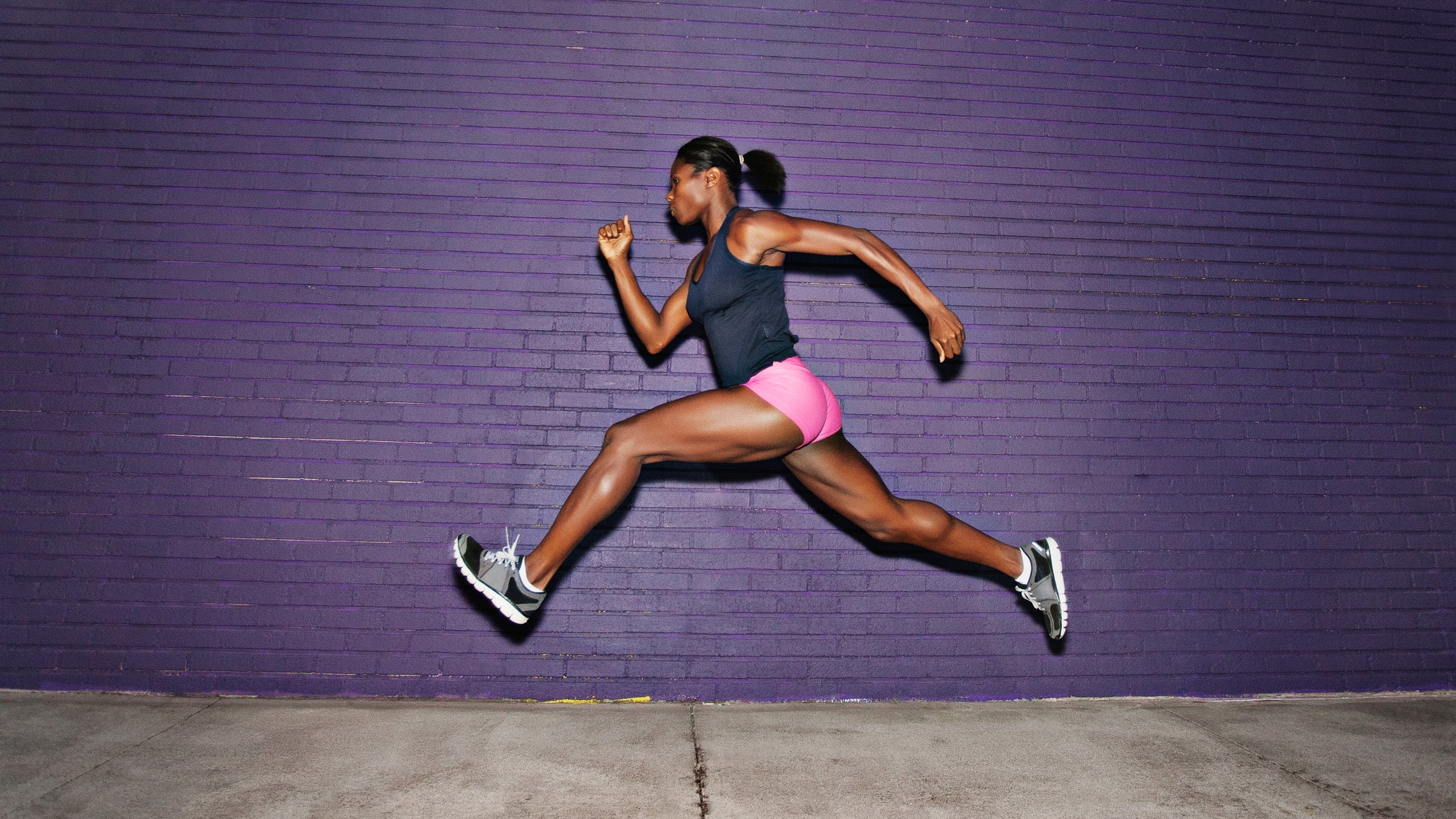The human body contains three types of muscles: cardiac, smooth, and skeletal. There’s really only one cardiac muscle — the heart. Smooth muscles are the muscles of our organs. Both are vitally important muscle groups, but when it comes to anatomy for runners, we’re going to ignore them. We’re interested only in skeletal muscles. They move bone and thereby help us perform work and achieve movement.
There are some 640 skeletal muscles in the human body, but that’s a misleading number. Many of these are tiny muscles in our face that help us form expressions and move our eyes and tongue. Take these away, and we are left with about 400 muscles.
We can chop that number in half because each muscle is part of a pair. One is the agonist, or moving, muscle, and the other is the antagonist, or opposing, muscle. To perform any movement, the agonist muscle has to contract and thereby move the bone to which it’s attached. The antagonist muscle must relax to permit the contraction. Otherwise, the two muscles create a stalemate.
Here’s an example of how these pairs function. Consider a biceps dumbbell curl. To perform that exercise, you hold a dumbbell palm up and flex your elbow, raising the dumbbell toward your shoulder. This movement requires you to contract the biceps muscle. But in order to bend the elbow, the triceps muscle on the back of your arm has to relax and stretch.
Understanding pairing is important. This key concept will help organize your workouts: Whenever one muscle is working, its opposing muscle is resting. Put that in your back pocket for now; we’ll return to it later.
So, we’re now left with about 200 pairs of muscles. But even that list can be chopped down significantly because we organize many of these muscles into groups that together power the movements we will be performing. For example, there are four large muscles that together are referred to as the quadriceps group, found on the front of the upper leg. This muscle group powers extension of the knee. These muscles are opposed by three large muscles referred to as the hamstrings, located on the back of the leg, which powers flexion of the knee.
These groupings can be found all over the body, from the shoulders to the calves. Now we’re getting to a manageable list of muscles.
The diagrams below, showing key muscle groups, have been organized further by collecting these groups of muscles into mega-groups that work together to perform big movements.

This takes us down to just four categories:
- Push muscles: The muscle groups of the chest, shoulders, and triceps, which help the body extend the arms and push the body away from something or push something away from the body.
- Pull muscles: The muscle groups of the upper back and biceps, which together pull the body up or forward, or pull something down or toward the body.
- Rotation muscles: The muscle groups of the torso, which power twisting movements. These include some of the core muscles used for balance.
- Leg muscles: We’ll collect all of the leg muscles together because many big leg movements involve all of the major muscle groups found here, including the legs’ pushing and pulling muscles.
Although any given exercise may not use all of the muscles in the group in which its target muscle is located, it will certainly use at least some of them. For example, a dumbbell chest press uses all of the push muscles (chest, shoulders, and triceps), while a dumbbell shoulder press uses two of them (the shoulders and triceps).
Now let’s return to the pairing concept discussed earlier. If an exercise uses one of the big muscle groups — the push muscles, for example — then the opposing muscles — the pull muscles — would not be working as hard. So when the primary muscle group being worked reaches temporary failure (the state at which it is too fatigued to do another repetition at that resistance level without resting first), the opposing muscle group is still fresh enough to get started on another exercise.
Is this a foolproof, comprehensive way to categorize exercises? No, for two reasons. First, although the concept of agonist and antagonist muscle groups teaches that one group is working while the opposing group is resting, the antagonist is never entirely quiet while the agonist is busy. That’s because its job is to oppose the movement slowly and help control it so nothing gets damaged in the process.
To understand this, imagine a group of workers lowering a piano from a high floor using a rope and pulley. Even though they would rely on gravity to pull the piano down to street level, they would still be working quite hard to make sure it came down gently, and not with a piano-splitting crash. The same is true for your antagonist muscles.
The second reason the pairing concept is not watertight is that some exercises use muscle groups from two, three, or even all four of these categories. So rather than thinking of the pairing framework as a law, think of it as a general guideline. It might not always provide an accurate description of a given exercise, but having this structure in mind will help us understand something important about each movement that we do.
Adapted from Ageless Strength by Jeff Horowitz with permission of VeloPress.


